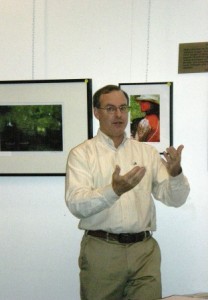
Peter Fisher speaks to the Friends of the Orcas Island Library.
Updated on Sept. 23, 2009
Peter Fisher, who has served on his share of public advisory and policy committees, has had it with the two agencies responsible for upholding the Madrona Point agreement of 1990 that saved the historic point into East Sound from development. He calls for “people power” to reclaim access to the area, site of several Native American, European pioneer and mixed-blood pioneer burial grounds.
Fisher reviewed the history of Madrona Point as the featured speaker at the Annual Friends of the Library meeting on Sept. 17.
In 1990, the U.S. Congress agreed to fund the purchase of Madrona Point, a promontory located a few blocks south of Main Street in Eastsound. A sign was later posted at Madrona Point by the Lummi Tribe, notifying that the land was also known by the name Ts’el-xwi-sen, and asking that respect be shown for the burial grounds.
The Congressional funding bill was seen as a great success in the project to preserve Madrona Point from development. In February, 1990, a celebration was held in honor of the cooperation and effort that saved the point.
But in June 2007, following a visit by Lummi Tribal Elders to the Point, a sign was posted, prohibiting access to the point’s trails and beaches. And there matters have remained, despite repeated efforts on the part of Fisher and others to communicate with both the Lummi Nation and the San Juan County Council.
At the Friends of the Library meeting, Fisher said that, in 1890, the Madrona Point property was “stolen” from the Cemetery District and sold to a private individual. A store and inn operated there until 1967, when Seattle real estate developer Norton Clapp purchased the property, adding to his investments on Turtleback Mountain and in Deer Harbor.
Clapp then turned the property over to a development company, that in 1984, was ready to move ahead on the development of 88 condominiums at Madrona Point.
“It was all perfectly legal,” Fisher said, but locals opposed the plan. In 1986, as the permitting process was continuing, local artists held a show of work depicting Madrona Point at Orcas Center.
Though Clapp had agreed to sell the point to the local group, by 1988 “There were only a few permits left to get, and every effort at fund-raising had failed,” said Fisher. Then, through a chain of events that involved William Randolph Hearst II, local businessman Rick Doty and Lummi lawyer Skip Johnson, Attorney Jim Waldo was hired to negotiate with the development company, the County, and the Lummi Nation. Talks involved the University of Washington and the greater Seattle Council of Churches, and ultimately the U.S. Congress was persuaded to contribute $2.2 million to purchase sacred sites in San Juan County – with a big condition attached.
That condition was that San Juan County and the Lummi Nation come to an agreement about access to and maintenance of Madrona Point. Public hearings were held, and Jim Plaster, speaking for the Lummis, told a community group that the tribe was willing to have the county regulate land use and hold criminal jurisdiction over the land; the Lummis wanted only to save the burial sites.
But, Fisher explained, land ownership is “a bundle of rights” as to usage. The Lummis hold title to Madrona Point; the County has the right to govern by land-use law. But nothing was put in place regarding maintenance. Since 1992, despite several efforts to come to agreement, no consensus or compromise has been achieved.
In the memorandum of understanding signed by the Lummi Nation and San Juan County in 1989, the Lummis agreed to “manage the property as an open-space, natural area and forest, open to individuals and groups for walking and educational purposes.” Public access is given “with permission of the Tribe, all consistent with protection of the natural resources and features of the Property.”
Fisher says, “To me, that means the agreement guarantees there is a way to get permission.”
When the point was closed, Fisher said, the Tribal Chair was in New York and denied that any action was taken or decision made by the tribe to deny access. However, the sign has remained for over two years, prohibiting access to the Point.
Over the years, Fisher has attempted to work with the Lummis to come to an agreement on many occasions, and has been frustrated by the lack of responsiveness. He has also met with the County Council “with no success.”
“With politics and the lack of funding, [an agreement] never has gotten off the ground,” Fisher says.
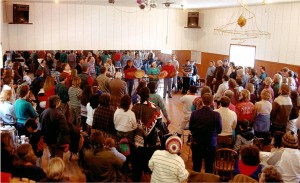
February 1990 party celebrating local acquisition of Madrona Point, deeded to the Lummi Nation with usage governed by San Juan County. Photo courtesy Peter Fisher.
Despite the fact that the 1990 agreement says that the Lummi Nation will create a maintenance plan and take care of the property, Fisher contends that Madrona Point, “which contains our ancestors remains too,” has been “harmed through neglect and abuse due to the lack of management.”
He says there has been “failure by both parties to honor the agreement… to honor ancestors’ burial grounds.”
“What troubles me is that our government is unwilling or unable to do the things to preserve Madrona Point. There is chronic inability of county government to do the job.”
Fisher proposed that the “amazing story of cooperation” in the acquisition of Madrona Point be revived. “It’s a numbers game… if a hundred people volunteered” to maintain and preserve the Point, then the county could recommend that the Lummi Nation give its permission to reopen Madrona Point, Fisher suggested. “If the Council saw how many people supported this, it may incline them to act,” he said.
Fisher gave copies of the Madrona Point acquisition history and documents to the Library. He is donating duplicate copies to the Historical Museum.
He announced that he will give another presentation about Madrona Point at a public meeting on Oct. 17, from 4 to 6 p.m. at the Odd Fellows Hall.
**If you are reading theOrcasonian for free, thank your fellow islanders. If you would like to support theOrcasonian CLICK HERE to set your modestly-priced, voluntary subscription. Otherwise, no worries; we’re happy to share with you.**


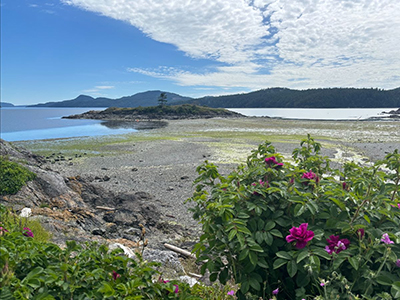
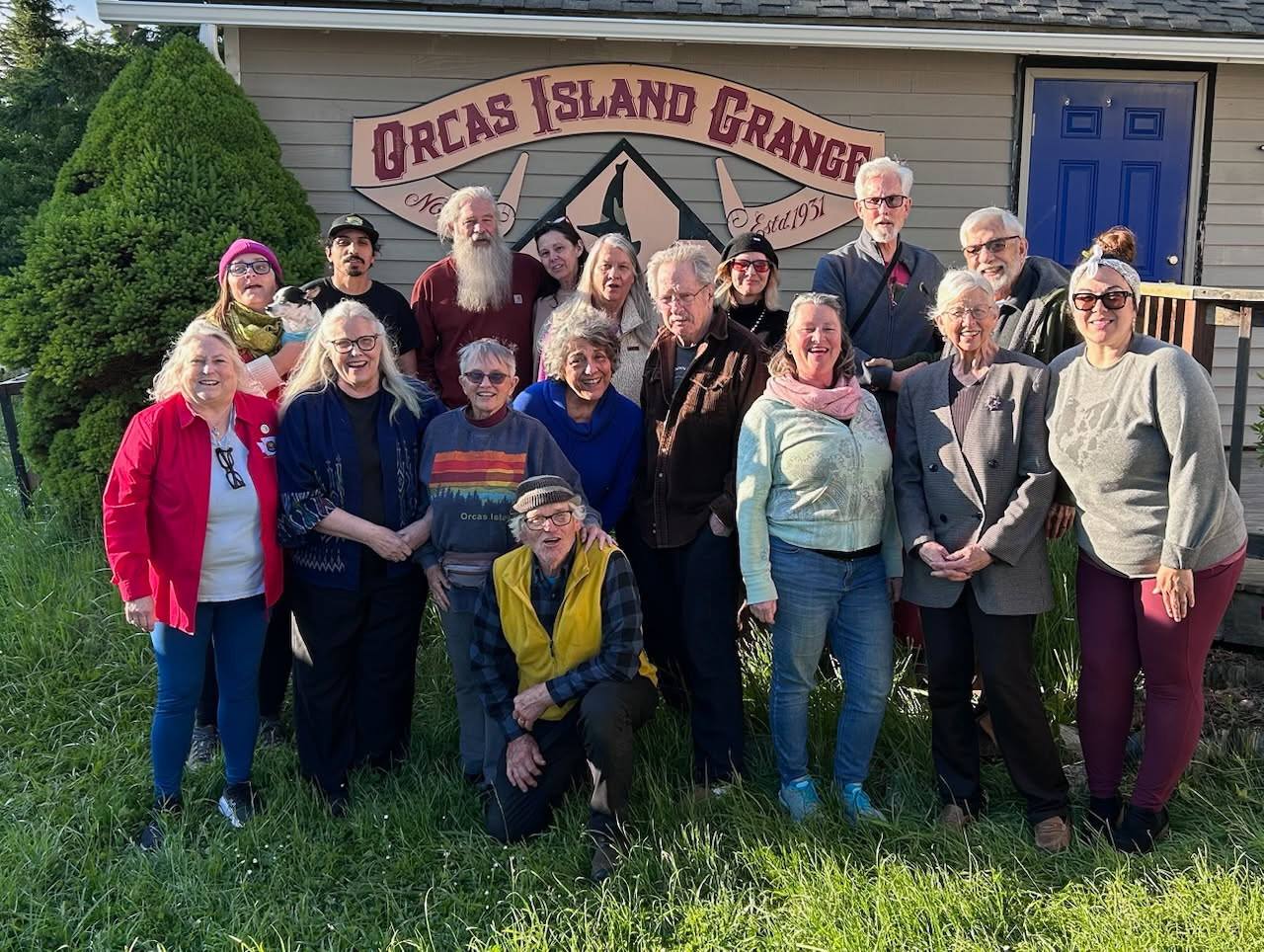
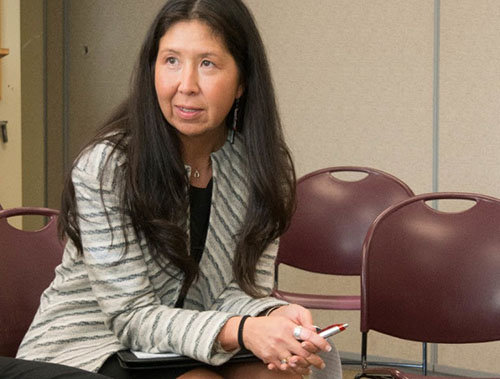
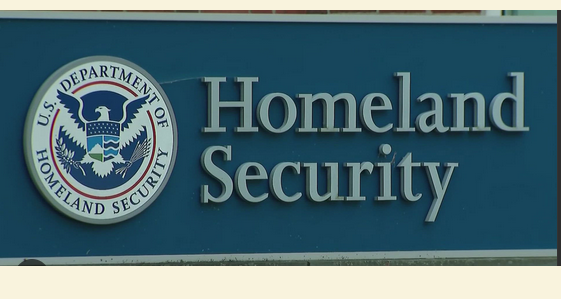
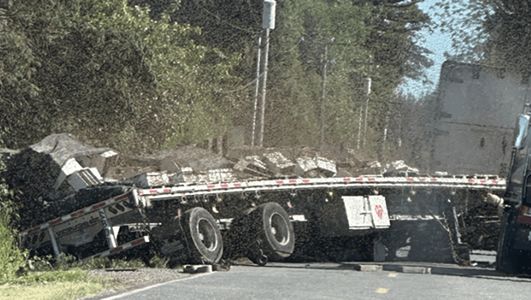
I was on Orcas when we tried to stop Madrona Point from being covered with condos, and then when it was preserved. I now live in Mtn. View, CA taking care of mother with Alzheimer’s. Was happy to run into this newsletter and hear about Peter Fisher’s good work. Always thorough and fair and impeccable.
Hope one day to return to Orcas and will help with Madrona when I do. Love to see this spirit continue.
And a Special “HI” to Peter!
Carol Wright
I was on Orcas when we tried to stop Madrona Point from being covered with condos, and then when it was preserved. I now live in Mtn. View, CA taking care of mother with Alzheimer’s. Was happy to run into this newsletter and hear about Peter Fisher’s good work. Always thorough and fair and impeccable.\
\
Hope one day to return to Orcas and will help with Madrona when I do. Love to see this spirit continue.\
\
And a Special “HI” to Peter!\
\
Carol Wright
I was on Orcas when we tried to stop Madrona Point from being covered with condos, and then when it was preserved. I now live in Mtn. View, CA taking care of mother with Alzheimer’s. Was happy to run into this newsletter and hear about Peter Fisher’s good work. Always thorough and fair and impeccable.
Hope one day to return to Orcas and will help with Madrona when I do. Love to see this spirit continue.
And a Special “HI” to Peter!
Carol Wright
Peter is right about the “amazing spirit of cooperation” that saved Madrona Point from development almost 20 years ago. Now it needs to be saved again, from neglect and inertia and bureaucracy. In addition to Peter who began it all with his photographs, other islanders stepped forward in leadership positions, such as Rick Doty, Jill Schropp, Casey Woods, Spirit Eagle, and Penny Sharp. Dozens of islanders joined to do the nitty gritty ‘committee’ work: drafting petitions, getting them signed, making phone calls, writing press releases, planning meetings, attending hearings – whatever it took.
It’s got to be islanders, stepping forward again!
To islanders who remember the incredibly joyous celebration at the Oddfellows, when Lummi tribal members and Orcas islanders rejoiced together in 1990: get your friends and neighbors to come to Peter’s next presentation on October 17th. Prepare yourself to do what you did before!
To island newcomers: become informed by reading the documents Peter donated to the library and attend Peter’s next presentation on October 17th.
To everyone: look at Peter’s photographs, look at Madrona Point from whatever vantage point you can. Walk as close as allowed right now. View by boat or fly over it! Let Madrona Point itself inspire you to the right action.
Love,
Sandy
Peter is right about the “amazing spirit of cooperation” that saved Madrona Point from development almost 20 years ago. Now it needs to be saved again, from neglect and inertia and bureaucracy. In addition to Peter who began it all with his photographs, other islanders stepped forward in leadership positions, such as Rick Doty, Jill Schropp, Casey Woods, Spirit Eagle, and Penny Sharp. Dozens of islanders joined to do the nitty gritty ‘committee’ work: drafting petitions, getting them signed, making phone calls, writing press releases, planning meetings, attending hearings – whatever it took.\
\
It’s got to be islanders, stepping forward again!\
\
To islanders who remember the incredibly joyous celebration at the Oddfellows, when Lummi tribal members and Orcas islanders rejoiced together in 1990: get your friends and neighbors to come to Peter’s next presentation on October 17th. Prepare yourself to do what you did before!\
\
To island newcomers: become informed by reading the documents Peter donated to the library and attend Peter’s next presentation on October 17th.\
\
To everyone: look at Peter’s photographs, look at Madrona Point from whatever vantage point you can. Walk as close as allowed right now. View by boat or fly over it! Let Madrona Point itself inspire you to the right action.\
\
Love,\
Sandy
Peter is right about the “amazing spirit of cooperation” that saved Madrona Point from development almost 20 years ago. Now it needs to be saved again, from neglect and inertia and bureaucracy. In addition to Peter who began it all with his photographs, other islanders stepped forward in leadership positions, such as Rick Doty, Jill Schropp, Casey Woods, Spirit Eagle, and Penny Sharp. Dozens of islanders joined to do the nitty gritty ‘committee’ work: drafting petitions, getting them signed, making phone calls, writing press releases, planning meetings, attending hearings – whatever it took.
It’s got to be islanders, stepping forward again!
To islanders who remember the incredibly joyous celebration at the Oddfellows, when Lummi tribal members and Orcas islanders rejoiced together in 1990: get your friends and neighbors to come to Peter’s next presentation on October 17th. Prepare yourself to do what you did before!
To island newcomers: become informed by reading the documents Peter donated to the library and attend Peter’s next presentation on October 17th.
To everyone: look at Peter’s photographs, look at Madrona Point from whatever vantage point you can. Walk as close as allowed right now. View by boat or fly over it! Let Madrona Point itself inspire you to the right action.
Love,
Sandy
Madrona Point is a good example of how difficult it is to close a park. Keeping it open to the public eye is a better way of insuring that it will be preserved than banning only those who will honor the no trespassing sign.
Madrona Point is a good example of how difficult it is to close a park. Keeping it open to the public eye is a better way of insuring that it will be preserved than banning only those who will honor the no trespassing sign.
Madrona Point is a good example of how difficult it is to close a park. Keeping it open to the public eye is a better way of insuring that it will be preserved than banning only those who will honor the no trespassing sign.
Kudos for your efforts, Peter. I’m sure your October presentation will be well-received. I hope there will be a sign-up sheet for volunteers and suggestions on how we personally can “encourage” our elected officials.
I am hopeful this worthy effort will avoid the all-too familiar pitfalls of the traditional “Orcas Fix-” that would be something like a $1.6 million “caretaker’s cabin,” a Madrona Point Tourist Info & Gifts Shop and a kennel for the poor dogs who cannot “contribute” to the beauty of Madrona Point. All this, of course, accompanied by insufficient operating funds.
Kudos for your efforts, Peter. I’m sure your October presentation will be well-received. I hope there will be a sign-up sheet for volunteers and suggestions on how we personally can “encourage” our elected officials.\
\
I am hopeful this worthy effort will avoid the all-too familiar pitfalls of the traditional “Orcas Fix-” that would be something like a $1.6 million “caretaker’s cabin,” a Madrona Point Tourist Info & Gifts Shop and a kennel for the poor dogs who cannot “contribute” to the beauty of Madrona Point. All this, of course, accompanied by insufficient operating funds.
Kudos for your efforts, Peter. I’m sure your October presentation will be well-received. I hope there will be a sign-up sheet for volunteers and suggestions on how we personally can “encourage” our elected officials.
I am hopeful this worthy effort will avoid the all-too familiar pitfalls of the traditional “Orcas Fix-” that would be something like a $1.6 million “caretaker’s cabin,” a Madrona Point Tourist Info & Gifts Shop and a kennel for the poor dogs who cannot “contribute” to the beauty of Madrona Point. All this, of course, accompanied by insufficient operating funds.
You’re completely right about this Peter; there’s no good reason Madrona Point can’t be acceptably maintained, and no good reason that public access should be blocked. It’s shameful and wrong that it is. I wonder if below-high-tide shoreline access remains legal, given public access to shoreline rights in WA State. Thanks Peter!
You’re completely right about this Peter; there’s no good reason Madrona Point can’t be acceptably maintained, and no good reason that public access should be blocked. It’s shameful and wrong that it is. I wonder if below-high-tide shoreline access remains legal, given public access to shoreline rights in WA State. Thanks Peter!
You’re completely right about this Peter; there’s no good reason Madrona Point can’t be acceptably maintained, and no good reason that public access should be blocked. It’s shameful and wrong that it is. I wonder if below-high-tide shoreline access remains legal, given public access to shoreline rights in WA State. Thanks Peter!